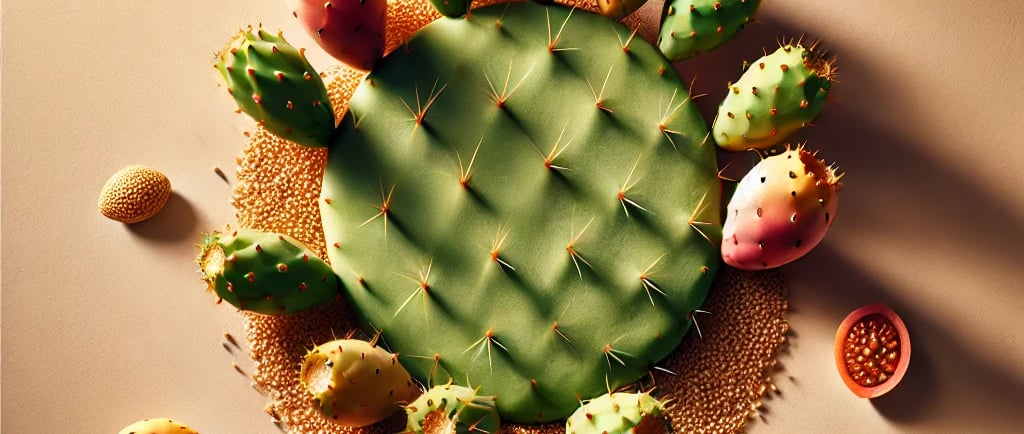Prickly Pear Seed Oil and Sustainable Development
Prickly pear seed oil is not only a cosmetic treasure; it also embodies a model of sustainability by combining social, environmental, and economic impacts. From its artisanal production to its effects on the ecosystem, it demonstrates how a product can support local communities while preserving our planet.


Support for Local Communities
The production of prickly pear seed oil largely relies on local cooperatives, often located in rural areas of Morocco. These cooperatives, mainly composed of women, play a key role in the economic and social development of these regions. Thanks to the income generated by the sale of this precious oil, many families benefit from a stable source of revenue. The cooperatives do not merely provide employment; they also offer training in artisanal techniques and management skills. This enables members to gain autonomy and become key players in their community.
Preservation of Natural Resources
The cultivation of prickly pear is a striking example of sustainable agriculture. This cactus is a resilient plant, capable of growing in harsh conditions where few other crops thrive.
Low-maintenance plant: Prickly pear requires little water, making it an ideal crop for arid regions. Its ability to grow without intensive irrigation reduces the strain on water resources.
Combating desertification: Cactus plantations help stabilize soils in areas prone to erosion and desertification. They play a crucial role in land conservation and ecosystem regeneration.
Waste reduction: Every part of the plant is utilized: the fruits for oil, the peels for animal feed, and even the fibers for artisanal products.
A Positive Impact on Biodiversity
Planting prickly pear cacti goes beyond fulfilling economic needs; these plantations also positively affect local biodiversity.
Wildlife habitat: Cacti provide shelter and a food source for numerous animal species, including insects, birds, and certain mammals.
Pollination: The cactus flowers attract a wide variety of pollinators, thereby contributing to the overall health of the ecosystem.
Resilient ecosystems: By encouraging cactus cultivation, environments capable of withstanding extreme climatic conditions are created, all while harboring rich biological diversity.
Reduction of the Ecological Footprint
The artisanal production of prickly pear seed oil is based on environmentally friendly techniques. Unlike polluting industrial processes, artisanal extraction uses minimal energy and often relies on traditional, low-impact methods.
Cold pressing: This extraction method, which preserves the oil’s quality, consumes less energy than chemical or industrial processes.
Reduced transportation: By favoring short supply chains between cooperatives and markets, the carbon footprint is minimized.
Sustainable packaging: Many producers commit to using recyclable or biodegradable materials to reduce the waste generated by their products.
A Perfect Alliance Between Beauty and Sustainability
Prickly pear seed oil is much more than a cosmetic product—it represents a sustainable vision of beauty where every drop supports local communities, protects natural resources, and contributes to the preservation of biodiversity. By choosing this oil, you are supporting an environmentally friendly economic model that upholds ethical values. Investing in prickly pear seed oil means opting for a product that benefits your skin while contributing to a more sustainable future for our planet—a beauty approach that truly makes sense.

